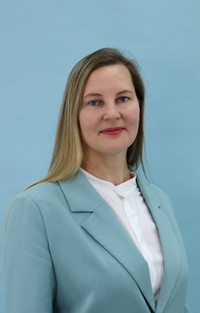Что такое «структура дефекта»?
- Рубрика: УЧЕНЫЕ — ПРАКТИКАМ
- Файл статьи: PDF
Аннотация: Настоящая статья представляет собой последний труд, подготовленный выдающимся психологом, основоположником российской научной школы специальной психологии, академиком В. И. Лубовским (15.12.1923 — 08.11.2017). Материал предоставлен редакции вдовой ученого Т. В. Лаврентьевой и подготовлен к публикации его аспирантами.
Обсуждается невозможность отражения содержания основного понятия специальной психологии и специальной педагогики — «структура дефекта» — как набора определенных количественных показателей психологических/психофизиологических функций, что связано с чрезвычайной вариативностью и совпадением количественных показателей ряда функций при нескольких типах нарушенного развития.
Анализ процесса психодиагностики нескольких типов нарушенного развития позволил выделить этап дифференциальной психодиагностики и ее объект — познавательную сферу и психофизиологические возможности. При этом выявлено, что в пределах каждого типа развития при вариативности показателей отдельных функций сохраняются определенные соотношения: функция, наиболее развитая по сравнению с другими, при всех индивидуальных вариантах и динамических изменениях сохраняет более высокое место, как и остальные, тоже остающиеся на своих местах. Это соотношение и представляет основные компоненты структуры дефекта.
Статья публикуется в связи с тем, что теория нового подхода в диагностике фактически основывается на понятии «структура дефекта», поэтому этот механизм нуждается в подробном рассмотрении.
Ключевые слова: структура дефекта; недостатки (нарушения) развития; дифференциальная психодиагностика; наглядно-образное мышление; зона ближайшего развития (обучаемость); стандартизованные интеллектуальные тесты; количественные оценки; способ познавательного взаимодействия (или способ взаимодействия с окружающей средой).
Abstract: This article is the last work prepared by the outstanding Russian psychologist, the founder of the school of special psychology, academician V. I. Lubovsky (15.12.1923 — 08.11.2017). The material was sent to the editorial board by the scholar’s widow T. V. Lavrent’yeva and prepared for publication by his post-graduate students.
The article discusses the inability to reflect the content of the basic notion of special pedagogy — “the structure of defect” — as a set of certain quantitative indicators of psychological/psychophisiological functions, which is associated with extreme variability and coincidence between the quantitative indicators of a number of functions in some types of developmental disorders.
The analysis of the process of psychodiagnostics of several types of developmental disorders allowed singling out the stage of differential diagnostics and its object — cognitive sphere and psychophisiological abilities. And it was revealed that within each type of development, variability of the indicators of certain functions coexists with definite correlations: the function most highly developed in comparison to others, in all individual variants and dynamic changes keeps the highest position, the same as other functions stay on their original levels. This correlation represents the main components of the structure of defect.
The article is published because the theory of the new approach in diagnostics is actually based on the concept of “the structure of defect”; so this mechanism needs detailed consideration.
Key words: structure of defect; defects (disorders) of development; differential psycho-diagnostics; visual-imagery thinking; zone of proximal development (teachability); standardized intellectual tests; quantitative estimation; method of cognitive interaction (or method of interaction with environment).


